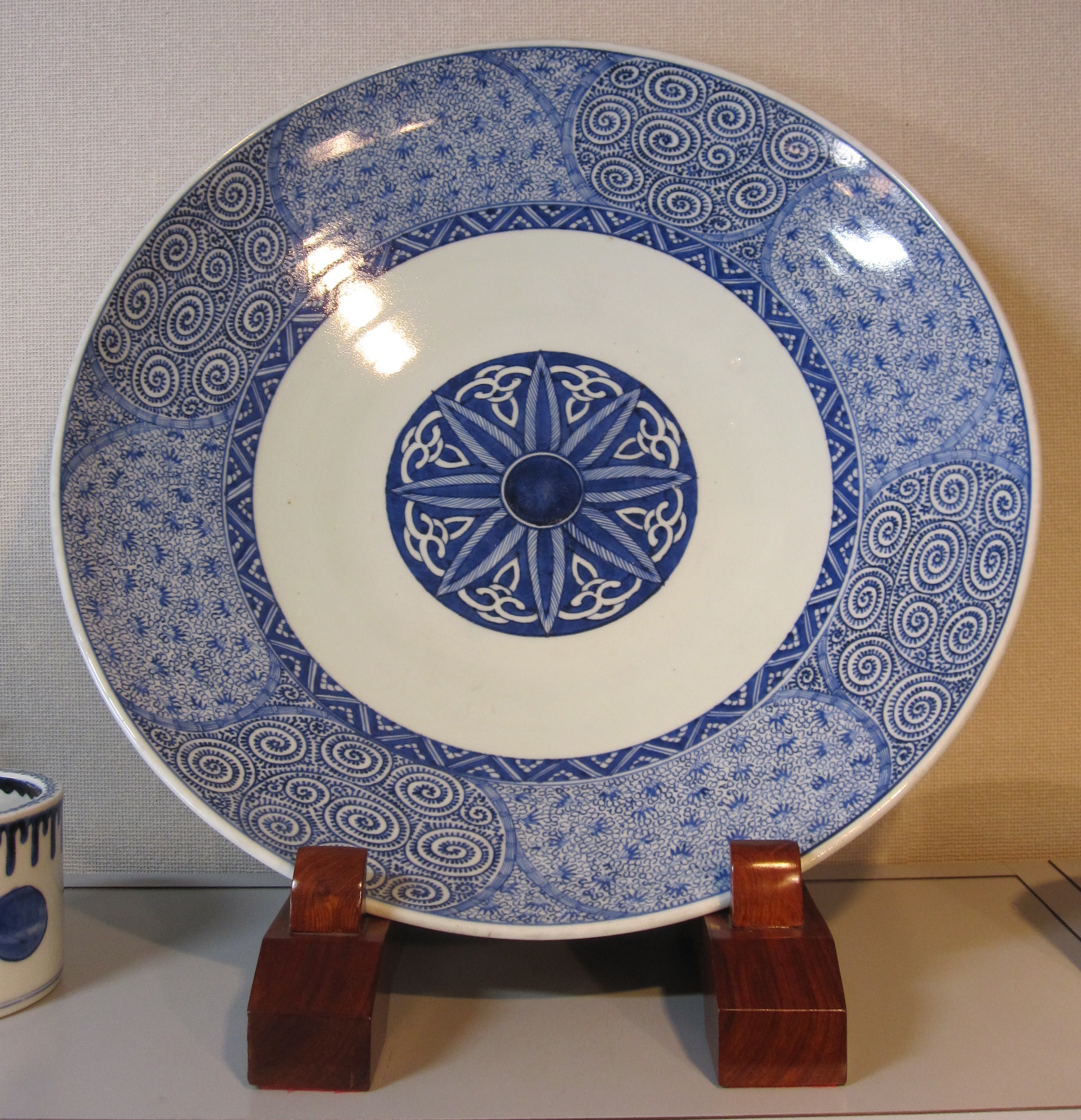 As a follow-up to yesterday’s post on antiquing in Nishi-Ogikubo, I wanted to devote a little more airtime to a wonderful shop, selling mainly porcelain, called Les Yeux Noirs. Owner Haruko Hasegawa has assembled one of the prettiest and most cohesive collections of antique Japanese porcelain that I have seen. She seems to buy and stock nothing ordinary – everything felt special and unusual, whether it was the motif, the shape or the pattern.
As a follow-up to yesterday’s post on antiquing in Nishi-Ogikubo, I wanted to devote a little more airtime to a wonderful shop, selling mainly porcelain, called Les Yeux Noirs. Owner Haruko Hasegawa has assembled one of the prettiest and most cohesive collections of antique Japanese porcelain that I have seen. She seems to buy and stock nothing ordinary – everything felt special and unusual, whether it was the motif, the shape or the pattern.
One of the things I really liked about the shop was the diversity of styles and periods and therefore prices. While she had her very valuable Edo period karakusa (Chinese winding grass or arabesque) pattern pieces locked in a cabinet, she also had the largest most diverse collection of inban (transfer printed porcelain) I have come across. As mentioned earlier, mass-produced transfer printing did not become popular in Japan until the Meiji period, even though it had been produced extensively in the West for more than 100 years prior. In transfer printing, a pre-made image is inked with dye and then pressed against a blank surface. The dye is “transferred” (thus the name) and the item is then fired in the kiln. There is none of the hand-painting that you find on all the other types of antique porcelain. But the transfer prints have their own distinct charm and a following. At shrine sales you can often see piles of these small round plates, in a few basic patterns. Hasegawa-san had an extraordinary display with great depth and variety. They are great fun to collect – often being more affordable that other porcelain – and wonderful to mix and match.
Take a close look at this scenic, almost map-like plate and the charming momiji (maple leaf) patterned covered bowls. Both are fairly rare shapes for transfer printed pieces.
We had great fun arranging pieces into groups, perhaps for wall display. Looking closely you’ll see everything from wisteria to peach to our good friends sho-chiku-bai (pine, bamboo, plum). Quite a few of these patterns were new to me.
On the opposite side of the shop prices went up, with gorgeous pieces of Imari, like these giant display plates. Don’t let the small photos fool you – they are enormous – and would be a real focus in any room. There were also lots of hard to find small hibachi – great for little planters.
There is also a branch of Les Yeux Noirs in the lovely mountain town of Karuizawa. That shop is open from April 20 – May 25 and again from July 20 – November 25. What is currently unclear to me is whether or not that means the Nishi-Ogikubo shop is closed during that period. I’ll update that here as soon as I have an answer.
The most difficult part about traveling to Les Yeux Noirs is that they are open tokidoki (sometimes) from roughly 12 p.m. until 6:30 p.m. It might be best to call ahead. But well worth the effort!
- Les Yeux Noirs, 4-1-22 Nishi Ogikubo: telephone 03-3395-5509
- Les Yeux Noirs, Karuizawa: telephone 0267-42-1534
For more on antiques in Nishi-Ogikubo see Shop Talk…Discovering Antique Treasures in Nishi-Ogikubo.









So pretty – definitely worthy of its own post!
It is a great shop!
Many years ago (abt 35!) I was able to borrow a wonderful set of plates by Spode and the tissues which demonstrated how the transfer process was done, to give a talk on transfer wares for my antiques study group. I worked for the little English import china shop at the time and wish I had thought to buy the demonstration set when they went out of business a few years later. I have avoided buying Japanese transfer ware, in favor of hand decorated pieces, but I will take a closer look at them- like anything, some is much better than others.
I think you either have a hankering for them or not – they don’t mix well with the hand painted pieces. But some people are just drawn to them! What a shame about the transfers – that would be an unusual thing to have.
And have you seen the newest post on faux bamboo??? I imagine you must have some rattling around your “Old Army” house!